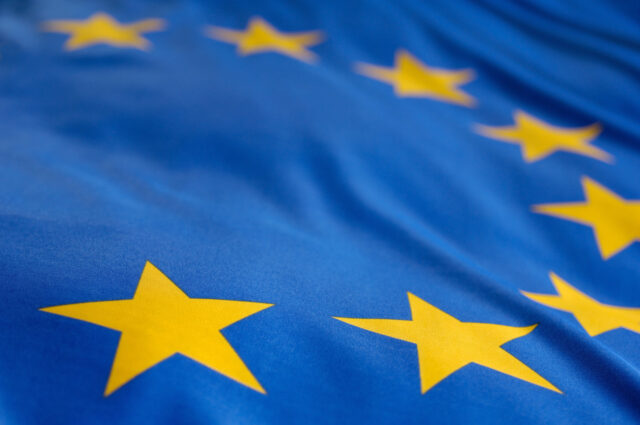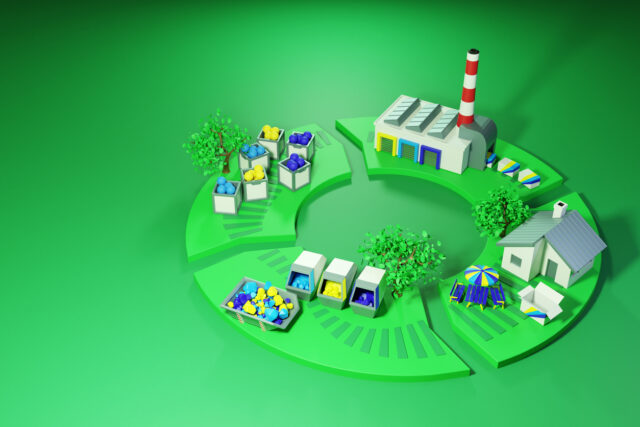Technology and trade have always advanced hand in hand. From the magnetic compass and astrolabe that enabled the Age of Discovery to the canals and railways of the Industrial Revolution to the digital revolution: all have brought us to today’s globalised economy.
But the invisible threads that crisscross the planet do not represent trade’s “end of history”; rather, they represent a major new era of complex challenges for the global supply chain which necessitates not only a major new technological revolution, but an equally fundamental cultural one.
Making sense of an unstable world
The term “supply chain” conjures up images of forged, unbreakable links crisscrossing the planet. In fact, these networks are less like steel and more like gossamer: invisible, delicate and easily-disrupted strands that can break for any number of reasons.
America’s trade war with China may have reached something approaching a truce, but the spectre of global pandemic has replaced it almost immediately as a source of supply chain disruption. Entire cities have been closed off as China attempts to contain the spread of the virus, while countries from Russia to the UK have effectively walled off the country while they assess the severity of the situation. The effect on supply chains is already being felt by a variety of industries who rely on China for the provision of everything from semi-conductors to car parts.
Add in consumer-led issues such as forced labour, unsustainable methods of production and CO2 emissions, and it’s obvious that the multitude of threads that make up the fabric of global trade are delicate and vulnerable to a host of factors outside our control.
To make the picture even more complex, extended supply chains are no longer about simply procuring and transporting ingredients, raw materials and components. The rise of offshoring and outsourcing now means that critical business functions like HR, legal, IT and even manufacturing have become an issue for Chief Procurement Officers (CPOs) who are charged with managing vastly more complex supply chains with technologies designed for a simpler age.
Building suppleness into supply chains
Most supply chains and the technology that underpins them were designed for a much more static, slow-moving world. As a result, making even small changes is often a painstaking process requiring months or even years to register new suppliers and integrate them within the business’ supply chain infrastructure.
That’s little use when today’s businesses might need to switch to a new source of supply – or even a different end-to-end supply chain – at a few day’s notice. The most urgent priority for CPOs is therefore to build much greater agility and suppleness into supply chains through digitisation. Not only does this streamline operations by removing paper-based processes and enabling much more rapid onboarding; it also provides the foundation for further transformational technologies such as artificial intelligence, machine learning and robotic processing automation (RPA).
Just as important in this ecosystem of interlocking relationships is the greater visibility into, and communications with the wider network of your supplier’s suppliers, giving you a hawk’s eye view of all operations and enabling you to quickly quantify all the factors that add to your total risk exposure.
With change being the only constant in global trade for the foreseeable future, businesses must take advantage of technology platforms, that digitise the entire end-to-end supply chain, giving them the agility to keep the wheels of commerce turning, in the face of any conceivable disruption.
Reimagining relationships
Crucial as new technology will be in underpinning tomorrow’s supply chains, it will only deliver meaningful value if businesses make similarly bold changes to their supplier relationships by putting them right at the very heart of business strategy.
The increasing symbiosis between consumer and supplier means that, to get the most out of the relationship, both parties need to be much more closely aligned in areas such as strategy and even values. The impetus towards greater sustainability provides a great example: a business needs to know that its suppliers share the same commitment towards, say, cutting carbon emissions and other pollutants, or building better traceability into the supply chain.
The successful supply chains of the future will be marked by true teamwork where each organisation in the chain is on exactly the same page – not just agreeing on quotidian matters of procurement, but sharing a common vision, strategy and set of values. In these times of ever-greater uncertainty, it is these trusted relationships – underpinned, of course, by the latest digital technologies – that provide the best chance of thriving in the Age of Disruption.











